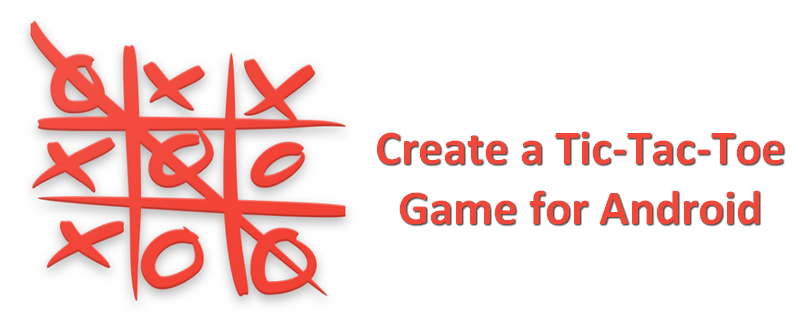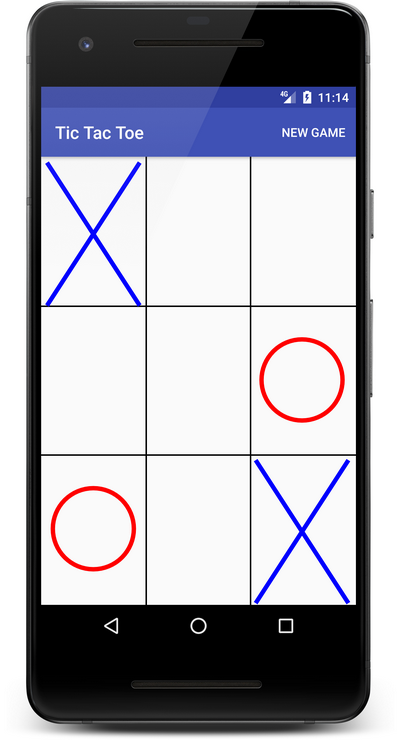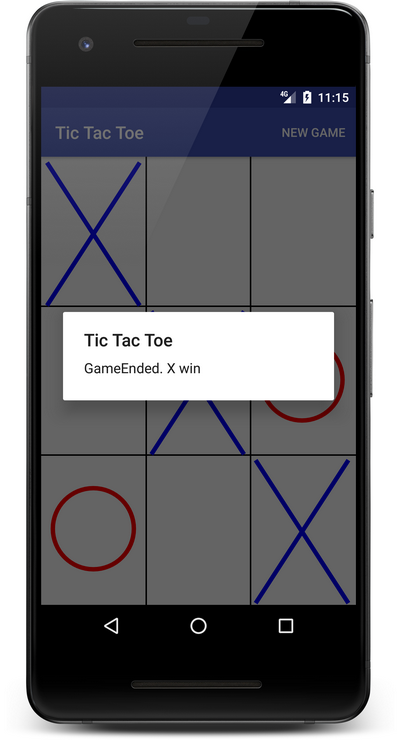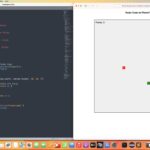Learn to create a Tic-Tac-Toe Game for Android
Tic-Tac-Toe is a classical paper-and-pencil game for 2 players. You were probably used to play Tic-Tac-Toe game during your childhood. The rules are quite simple : each player sets a X or O on a 3×3 grid. The player who succeeds in placing three of their marks in a horizontal, vertical, or diagonal row wins the game.
In that tutorial, you are going to implement your own Tic-Tac-Toe Game for Android with simple Artificial Intelligence since the computer will randomly place a mark on the grid.
Note that you can enjoy this tutorial in video on YouTube :
Creating the Board
First step is to create the Board for the Tic-Tac-Toe game. The Board class will store the elements of the grid in an array and will contain a boolean indicating if the game is ended or no.
The play method will let you to set the mark of the currentPlayer on the grid at a given (x,y) position. A changePlayer method will be used to change the current player for the next play. Besides, a computer method is defined to let the user to randomly place a mark on the grid. Finally, we define a checkEnd method to check if the game is ended. The game is ended if there is a winner or a draw : all the cases of the grids are filled and no one wins the game.
This gives us the following code for the Board class :
Rendering the Board on the Screen
Next step is to create a BoardView class to render our Board on the screen. Our BoardView will extend the View class and we will draw the Board and its elements on the Canvas object associated. It is a good way to discover how to draw simple shapes on a Canvas of a specific View too.
Furthermore, we must manage the touch events of the users on the Board to let it to play to our Tic-Tac-Toe game. For that, we override the onTouchEvent method from the View parent class. In that method, we convert a point touched on the screen to a case on our grid. Then, we make the play on the Board object. After that, we need to call the gameEnded method of the parent activity if the game is ended to display the win dialog to the user. If not, we make the play for the computer. Like you can see, the heart of the logic game will be located in this method.
This gives us the following code for the BoardView object :
Creating the UI for our Game
The biggest part of the user interface of our Tic-Tac-Toe game is managed in the BoardView class. So, we just need to set our BoardView component into a RelativeLayout parent View in our layout file :
Starting a new Game
To star a new game, the user will have to click on a load item in the action bar of our application. So, we add the item in a main.xml menu file under /res/menu :
Assemble all the pieces of the puzzle
Last step is to assemble all the components created previously in the MainActivity class. In the onCreate method, we create the Board object and then we pass it in parameter of the BoardView got from the main layout of the application. Then, we connect the new game item of the action bar with the newGame method of the Board object to create a new game when the user will click on it. Finally, we define the gameEnded method which was called in the BoardView object.
This gives us the following code for our MainActivity :
Playing to Tic-Tac-Toe Game
Now, we can try our game and play to the famous Tic-Tac-Toe game :
The game works great and finally, we win the game against the computer which is logical because our Artificial Intelligence (AI) is really basic :
To go further
After this tutorial, you can go further by improving the AI of the computer for the Tic-Tac-Toe game. How ? By implementing the MinMax Algorithm. For that, you can watch the following video tutorial I made previously showing how to implement the MinMax Algorithm for a Tic-Tac-Toe game coded in Java :
If you have questions concerning this tutorial, don’t hesitate to use the comments.






Leave a Reply
You must be logged in to post a comment.